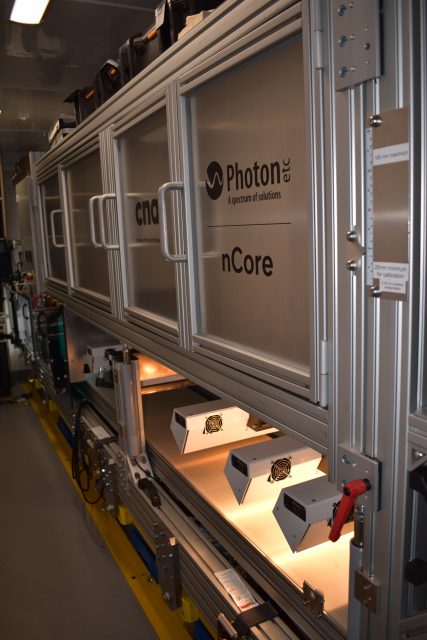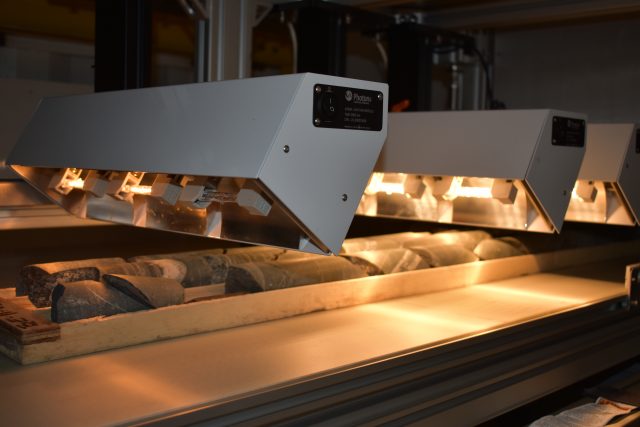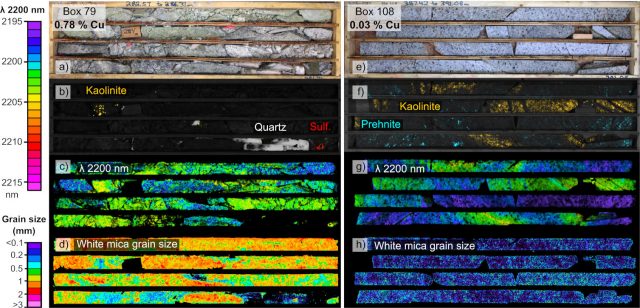Mining the Future 2030 aims to attract and support prospecting, exploration, and development for Newfoundland and Labrador. One aspect under the Public Geoscience, Marketing and Education Focus Area is the advancement of a drill core digitization process.
Historically, core logging has been carried out on paper logs, which can be spread over several pages for a single drill hole. This makes it difficult to quickly summarize data from a single hole or browse through the results of an exploration campaign, which may consist of dozens to hundreds of drill holes. Drill core logging relies almost exclusively on visual inspection and interpretation by geologists.
The Hyperspectral Scanning Unit (HSU) project is a collaboration – led by College of the North Atlantic (CNA), and funded by ACOA (Atlantic Canada Opportunities Agency) via its Regional Economic Growth though Innovation (REGI) program, the Government of Newfoundland and Labrador, and by industry partners Iron Ore Company of Canada, and Agnico Eagle Mines. This funding supports the work of the innovative team at College of the North Atlantic and enhances the geoscience data available in the Department of Industry, Energy and Technology via the Core Storage Program.
This unit, which is one of the most technologically advanced in the world, will undertake applied research on the use of hyperspectral imaging with an initial focus on Newfoundland and Labrador’s extractive industry sector. Unlike current lab-based instruments, CNA’s HSU is designed to be transportable, which makes it accessible to mining and exploration sites throughout the province. The scanning of archival Newfoundland and Labrador’s government and industry drill core will provide quantitative data that will provide deeper insights into the mineralogy present within drill core and may reduce the amount of drilling required to understand local geology.
The HSU as a complement to physical logging as the HSU excels in revealing specific mineral composition that may be too small to see with the naked eye. The unit provides more information to experts in a cost efficient, non destructive way.
- In an exploration environment, it will allow for better understanding of local and regional geology, and could facilitate the discovery of further mineral deposits.
- In a production environment, it will precisely characterize the material being mined and milled, allowing for improvement in ore processing rates.
The HSU consisting of four cameras: Visible-Near Infrared, Shortwave Infrared, Midwave Infrared and Longwave Infrared; a motorized support frame and is designed to fit in a road transportable container. This container includes all the equipment necessary to operate the instrument, and also serves as an on-site research laboratory.


The mobile hyperspectral imaging unit acquires high-resolution (≈1 mm/pixel) hyperspectral imagery of drill core, as shown in the image below.

Lypaczewski et al. (2020)
To learn more about the CNA Spectroscopy Database, please visit: CNA Spectroscopy (cna-spectroscopy.ca)
Hyperspectral Scanning Unit – YouTube.
Lypaczewski, P., Rivard, B., Lesage, G., Byrne, K., D’Angelo, M., & Lee, R. G. (2020). Characterization of Mineralogy in the Highland Valley Porphyry Cu District Using Hyperspectral Imaging, and Potential Applications. Minerals, 10(5), 473.
